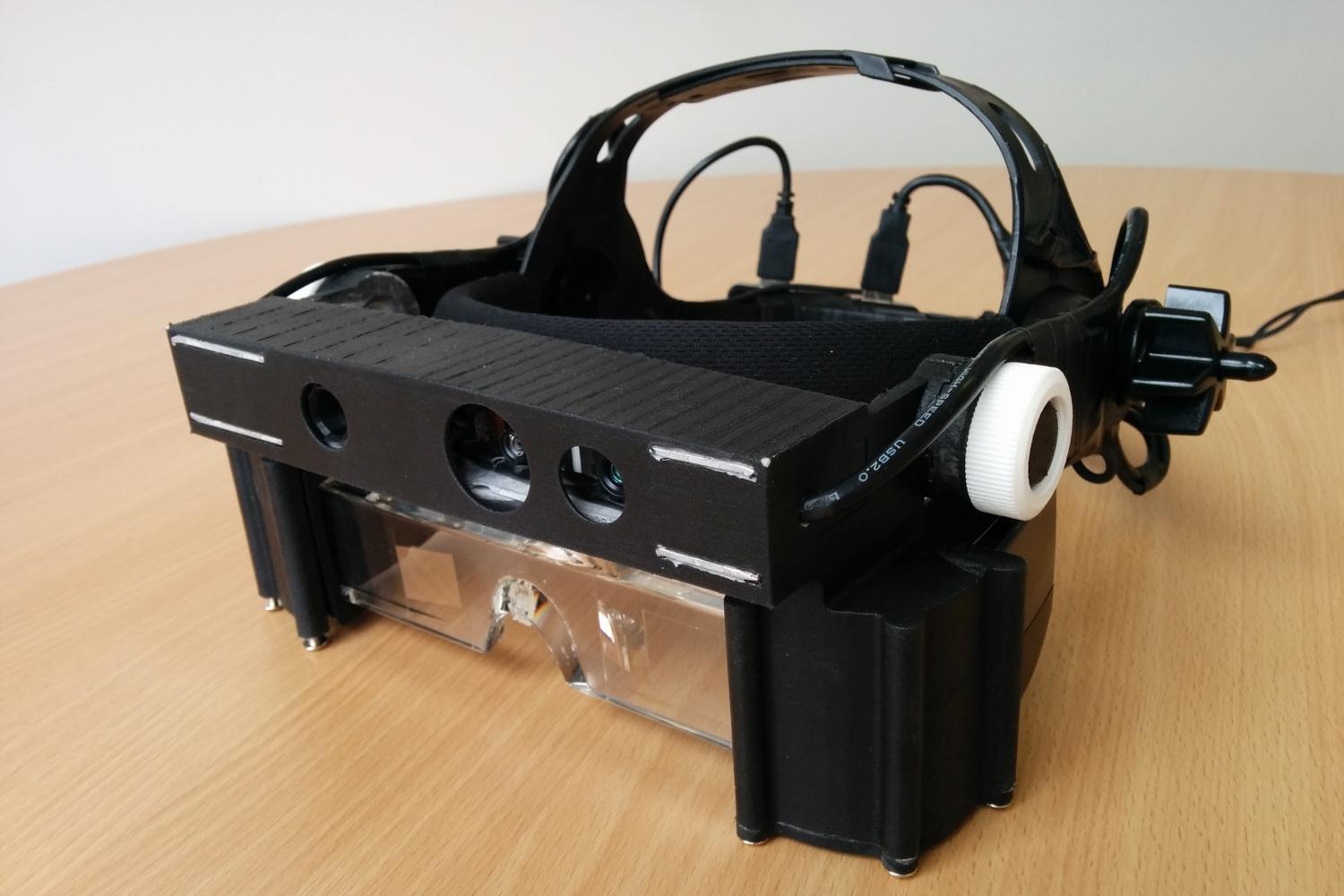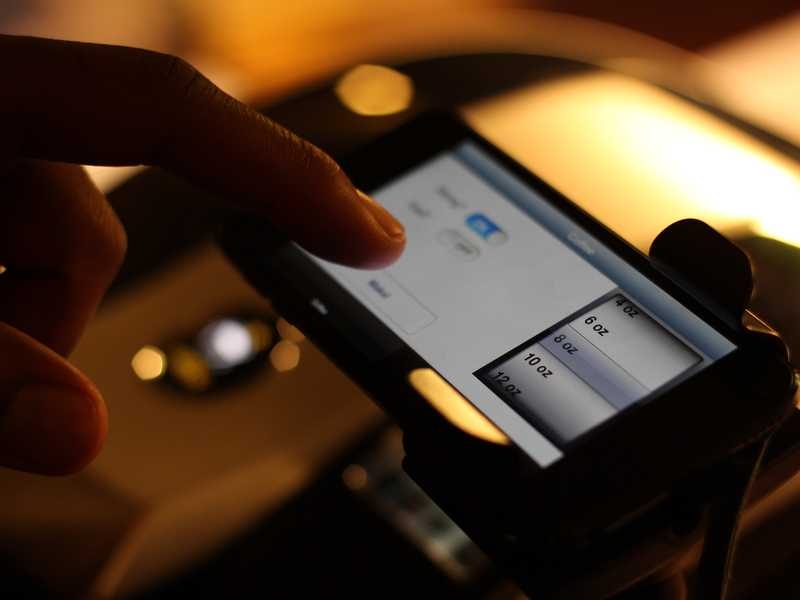Discover Cutting-edge Devices Developed for the Visually Damaged
The growth of cutting-edge tools for the aesthetically damaged stands for a considerable advancement in accessibility and independence. Technologies such as clever glasses with AI capacities and mobile applications created to supply auditory descriptions are improving day-to-day experiences for individuals.
Smart Glasses for Navigation

Smart glasses developed for navigating are changing the means visually impaired individuals communicate with their atmosphere. These sophisticated tools make use of a combination of video camera innovation, expert system, and acoustic responses to give real-time details concerning environments. By employing obstacle detection systems, smart glasses can notify individuals to prospective threats, allowing much safer wheelchair in both familiar and unknown settings.
The assimilation of GPS modern technology better boosts navigating abilities, enabling users to receive acoustic instructions as they relocate. This hands-free method not only fosters freedom yet likewise equips visually damaged people to navigate urban landscapes with increased self-confidence. In addition, lots of wise glasses are geared up with features that recognize sites and street indicators, giving contextual info that enhances the customer experience.
In addition, the advancement of these devices is continually progressing, with business working to improve the precision of item acknowledgment and increase the range of navigational attributes. As clever glasses end up being more obtainable and affordable, they hold the potential to dramatically change every day life for visually impaired customers. Eventually, these innovative devices represent an important step towards inclusivity, offering enhanced wheelchair and a better sense of freedom for individuals navigating the globe around them.

Mobile Application for Daily Living
Just how can mobile applications improve the daily lives of visually damaged individuals? Mobile apps are changing the method visually damaged individuals navigate their settings, handle daily jobs, and accessibility info. These applications provide essential assistance with various capabilities, promoting independence and boosting quality of life.
Numerous ingenious mobile applications are created specifically for day-to-day living. For instance, applications like Be My Eyes link aesthetically impaired customers with sighted volunteers using video clip calls, permitting them to get real-time aid with tasks such as reviewing labels or browsing unfamiliar areas. In A Similar Way, Seeing AI, developed by Microsoft, utilizes expert system to define surroundings, checked out message, and identify items, properly transforming a mobile phone right into a powerful tool for everyday aid.
In addition, navigation apps customized for the visually damaged, such as Aira and BlindSquare, offer audio-based instructions and ecological information, allowing users to traverse their surroundings safely and with confidence. Beyond navigating and instant assistance, mobile apps also support organization and task administration, with functions that assist individuals establish tips, develop order of business, and track consultations. In recap, mobile applications act as important sources, equipping aesthetically impaired individuals to lead more independent and satisfying lives.
Wearable Technologies for Help
Empowerment with modern technology is significantly obvious in the world of wearable tools made to assist visually damaged individuals. These cutting-edge devices incorporate flawlessly right into day-to-day life, boosting navigating and giving crucial responses to individuals. Clever glasses furnished with video cameras can review and identify faces message aloud, allowing users to communicate more with confidence in expert and social settings.
Another remarkable improvement is using haptic comments systems in wearable devices. These systems use vibrations or other tactile signals to convey details regarding the individual's environment, such as barriers or modifications in terrain, boosting wheelchair and security. Wearable technologies additionally include wristbands that attach to mobile phones, notifying users to alerts through refined vibrations, hence enhancing connection without reliance on aesthetic cues.
As these innovations continue to advance, they are not only improving independence for aesthetically impaired people but additionally promoting a higher sense of incorporation in society. By bridging the gap in between obstacles dealt with in everyday living and the potential for autonomy, wearable technologies serve as pivotal devices in the pursuit for equality and empowerment for those with visual impairments.
Audio Summary Devices
Sound summary devices play an important duty in boosting accessibility for visually impaired individuals, supplying them with the capability to involve with aesthetic media. Smart glasses for the visually impaired. These tools use narrated descriptions of essential visual aspects in movies, television programs, and live efficiencies, making sure that customers can totally comprehend the context and emotions communicated with visuals
Sound description can be integrated into various systems, consisting of streaming services, cinema screenings, and live movie theater. Many popular streaming services now include audio description as an accessibility feature, allowing visitors to select it quickly. In enhancement to traditional media, specialized applications also exist, offering audio descriptions for art exhibits, galleries, and various other social events.
The effectiveness of audio summary rests on the skill of the narrators, that need to communicate visual details succinctly without diminishing the initial sound. Innovations in this area are additionally leading the way for more tailored experiences, where customers can readjust the degree of information and pacing according to their preferences.
Braille Innovations and Devices
Braille developments and devices have substantially transformed the means visually damaged individuals interact with message and information. Modern innovations have led to the development of flexible tools that improve literacy and freedom among individuals.
Additionally, portable Braille notetakers integrate traditional Braille input with contemporary functionalities, facilitating note-taking, organizing, and document modifying on the move. AI-powered visual aids. These portable devices commonly feature text-to-speech abilities, bridging the space in between Braille and auditory details
In addition, ingenious Braille printers have actually emerged, enabling customers to produce Braille tags, records, and educational products effectively. This access fosters higher involvement in specialist and instructional environments, ultimately promoting inclusivity.
Moreover, study right into clever Braille technologies continues to broaden. Tools that include expert system are being explored to provide real-time navigation assistance and contextual information, enhancing the individual experience in diverse settings. In general, these advancements show a dedication to equipping visually impaired individuals with innovation, ensuring they can easily access and engage with the globe around them.

Verdict
The improvement of cutting-edge tools for the aesthetically damaged substantially boosts independence and lifestyle. Smart glasses, mobile applications, wearable technologies, audio description devices, and Braille technologies collectively equip people by giving vital navigating aid, environmental understanding, and boosted reading experiences. These technologies not just foster greater addition however additionally promote autonomy in everyday tasks, inevitably contributing to a much more equitable and obtainable society for visually damaged individuals. Proceeded advancement in this field holds promise for further improvements.
As clever glasses end up AI-powered visual aids being much more available and affordable, they hold the possible to substantially transform day-to-day life for aesthetically impaired customers. Mobile applications are transforming the way aesthetically damaged users browse their atmospheres, manage day-to-day tasks, and access details. Apps like Be My Eyes attach aesthetically impaired customers with sighted volunteers through video clip phone calls, allowing them to obtain real-time support with tasks such as checking out labels or browsing unknown spaces.In addition, navigation applications tailored for the aesthetically impaired, such as Aira and BlindSquare, use audio-based directions and ecological information, making it possible for users to traverse their surroundings securely and confidently.The innovation of innovative devices for the visually impaired dramatically enhances freedom and quality of life.
Comments on “Speech-to-Text Devices for Low Vision: Bridging the Communication Gap”